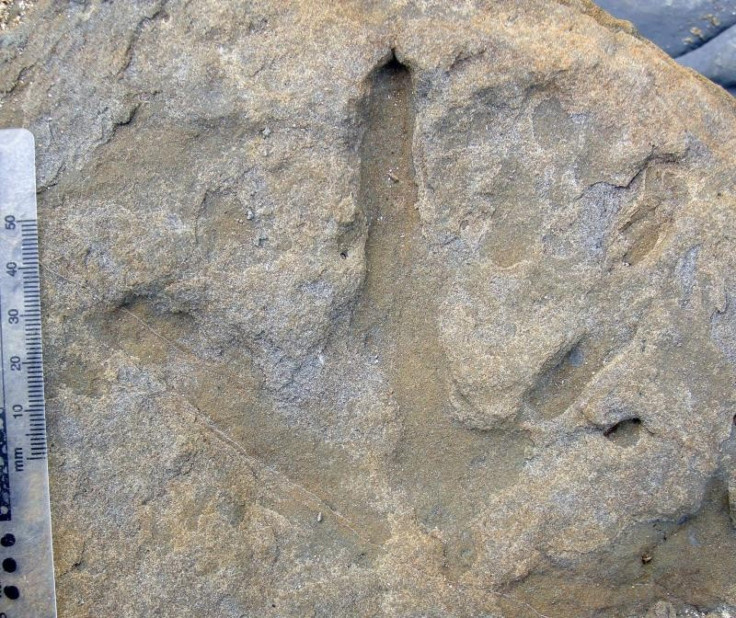Rare Polar Dinosaur Tracks Discovered in Victoria, Australia

24 rare dinosaur footprints have been discovered in Victoria, Australia, making them the largest and best preserved collection of polar dinosaur tracks in the Southern Hemisphere, reports the journal Alcheringa: An Australasian Journal of Paleontology.
The tracks date back to around 105 million years ago, when Victoria, Australia was still connected to Antarctica.
These three-toed tracks were most likely created during a polar summer when the earth was experiencing its last period of pronounced global warming, causing glaciers to melt and create a floodplain soft enough for the dinosaurs to leave tracks.
Paleontologists believe the newly discovered tracks, found in sandstone blocks on Milanesia Beach in Great Otway National Park, about 100 kilometers from Melbourne, are from up to three different dinosaur species that thrived in the area 115-105 million years ago, during the Early Cretaceous Period. They appear to belong to three different sizes of small theropods -- a group of bipedal, mostly carnivorous dinosaurs whose descendants include modern birds.
The 24 tracks represent 85 to 90 percent of the known dinosaur footprints in the state, and are considered to be an invaluable resource of information on dinosaur diversity and activity.
The rocks containing the tracks (each weighing around 1,543 pounds, or 700 kilograms) were removed and transported in two blocks to Museum Victoria, where silicon surface molds will be made for further study.
This is only the fourth set of dinosaur tracks discovered in Victoria in more than 100 years of paleontological research and excavations. Tracks are different from bones, in that, "these tracks provide us with a direct indicator of how these dinosaurs were interacting with the polar ecosystems, during an important time in geological history," says Emory University paleontologist Anthony Martin, who first discovered the tracks last year on June 14.
The research team also included Thomas Rich from the Museum Victoria; Michael Hall and Patricia Vickers-Rich, both from the School of Geosciences at Monash University in Victoria; and Gonzalo Vazquez-Prokopec, an ecologist and expert in spatial analysis from Emory's Department of Environmental Studies.
The footprints vary in size, ranging from the size of a chicken to a large crane, which suggests that they were made by a variety of dinosaurs and included what the scientists think could be a "dinosaur trackway" - a series of three consecutive tracks made by the same dinosaur, what may be a small 150-million-year-old carnivore, across the same spot. If their assumptions are correct, it will be the first Cretaceous dinosaur trackway ever discovered in Victoria.
The small, medium and large tracks may have been made by three different species, Martin says. "They could also belong to two genders and a juvenile of one species -- a little dinosaur family -- but that's purely speculative."
To find out more about this discovery, check out this video with Anthony Martin of Emory University in Atlanta, Georgia.
© Copyright IBTimes 2024. All rights reserved.





















